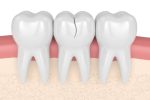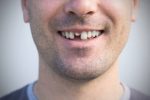 Most of us are making efforts daily to take care of our teeth. Chances are, you’re brushing twice a day for the recommended two-minute minimum. You may be using a fluoride mouthwash right after you brush when it’s most effective. But is proper flossing part of your routine?
Across Canada, it’s reported that only 16 percent floss regularly — and nearly a third don’t floss at all. While proper, regular brushing will help give you a lifetime of healthy teeth, flossing is an important aspect of oral care that shouldn’t be ignored. If you want to give your teeth the care they deserve, these flossing tips will greatly contribute to their appearance and durability.
Most of us are making efforts daily to take care of our teeth. Chances are, you’re brushing twice a day for the recommended two-minute minimum. You may be using a fluoride mouthwash right after you brush when it’s most effective. But is proper flossing part of your routine?
Across Canada, it’s reported that only 16 percent floss regularly — and nearly a third don’t floss at all. While proper, regular brushing will help give you a lifetime of healthy teeth, flossing is an important aspect of oral care that shouldn’t be ignored. If you want to give your teeth the care they deserve, these flossing tips will greatly contribute to their appearance and durability.
Table of Contents
Make It an Evening Activity
One of the many benefits salivae provides is its ability to dilute and wash away bacteria that can harm your teeth. However, when you sleep, the amount of saliva in your mouth decreases. You want to make sure your teeth are as clean as possible before bedtime, and flossing when you brush at night will go a long way to help. Flossing every morning and evening is great for oral care, but the general consensus is that once a day is effective enough to make a difference. So if you’re only doing it once, make sure it’s at night.Use a Floss Appropriate for Your Teeth
When shopping for dental floss, you’ve no doubt seen the variety of options available. For flossing to be as effective as possible, you may need to try different types out to see which works best for you. Here’s a good guide to follow:- Are your teeth close together? Does your floss wind up shredding during use? Try using waxed or Teflon floss.
- If teeth are spaced a little further apart, pick up a brand that’s thicker.
- Standard, unwaxed floss tends to spread and flatten out during use, which can increase its effectiveness. It’s a great choice if your teeth have average spacing.
- Do you have mobility issues, or find it tricky to use regular thread floss effectively? Try using a floss holder or handle, or pick up pre-threaded alternatives.








